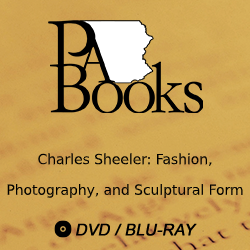Description
Philadelphia native Charles Sheeler (1883-1965) is recognized as one of the founding figures of American modernism. Initially trained in impressionist landscape painting, he experimented early in his career with compositions inspired by European modernism before developing a linear, hard-edge style now known as Precisionism. Sheeler is best known for his powerful and compelling images of the Machine Age—stark paintings and photographs of skyscrapers, factories, and power plants—that he created while working in the 1920s and 1930s. Less known, and even lesser studied, is that he worked from 1926 to 1931 as a fashion and portrait photographer for Condé Nast. The body of work he produced during this time, mainly for Vanity Fair and Vogue, has been almost universally dismissed by scholars of American modernism as purely commercial, the results of a painter's "day job," and nothing more. Charles Sheeler contends that Sheeler's fashion and portrait photography was instrumental to the artist's developing modernist aesthetic. Over the course of his time at Condé Nast, Sheeler's fashion photography increasingly incorporated the structural design of abstraction: rhythmic patterning, dramatic contrast, and abstract compositions. The subjects of Sheeler's fashion and portrait photography appear pared down to their barest essentials, as sculptural objects composed of line, form, and light. The objective, distant, and rigorously formal style that Sheeler developed at Condé Nast would eventually be applied to all of his artistic forays: architectural, industrial, and vernacular.
Kirsten Jensen is the Gerry and Marguerite Lenfest Chief Curator at the James A. Michener Art Museum.
Shawn Waldron is the former Senior Director of Archives and Records at Conde Nast.
Description courtesy of University of Pennsylvania Press.




